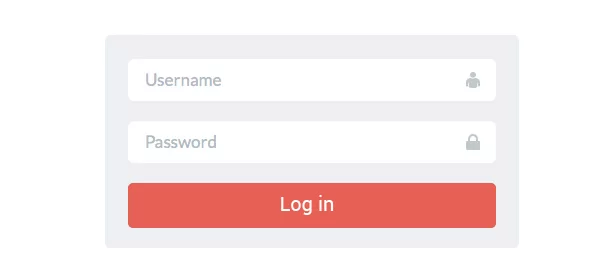
Table of Contents
WordPress continues to offer an astounding array of choices and customization options for website owners.
One option in particular can help add authority to your site and create an improved user experience for your site visitors: enabling user profiles.
Allowing your repeat visitors to create their own user profiles can help make your site “the place to be” in your niche, differentiating your site from your competitors and fostering a sense of community among your users, all centered around your brand.
Let’s look at five ways adding user profiles to your site can help you increase your site’s authority, reputation, and ultimately its conversion rate.
1. Create a community “face” for your site
One of the most common pieces of digital marketing advice given is to “create a community.” But how, exactly, are you supposed to do that?
Sure it’s easy for large brands to create user communities around Facebook pages or websites, but isn’t that unrealistic for smaller brands?
Not at all. Adding user profiles and easy registration to your site is like “instant community.” The mere fact of registering as a user creates that sense of community in the user’s mind.
Profile Builder is one great way to accomplish this. It’s essentially an all-in-one user registration and management plugin for WordPress sites, which makes enabling enhanced profiles as simple as creating one page and inserting a shortcode.
Social proof — also known as informational social influence — isn’t just “an online thing.” It’s a well-documented psychological phenomenon that can drive decision making in surprising ways, both online and off.
Basically, social proof is anything that demonstrates to a given person what the “correct” choice in a given decision may be, by showing what others have chosen to do. In other words, when we see others taking a certain action, we become convinced that’s the correct choice for us, too, and are more likely to make the same choice.
And it’s powerful stuff. In fact, the psychological mechanism underlying social proof can even overcome prevailing social norms, as the infamous “elevator experiment” demonstrated.
There’s no question that many forms of social proof can increase your conversion rate. You’re probably already familiar with the most common types of social proof: case studies, comment/share counts, testimonials and reviews.
User profiles act as a form of social proof of the value of your site. They foster a desire in new visitors to stick around and ultimately to join in themselves.
With a number of registered users on your site, new visitors also feel a heightened sense of trust in your brand and what you have to offer.
3. Convey a sense that your brand values its customers
Enabling front-end login and user registration removes a lot of friction in the default WordPress login process by not displaying the dashboard to your users. (It also can reassure skittish owners who view dashboard access as inherently risky.)
And let’s face it: for non-WordPress users, being confronted with the dashboard for the first time can be an unsettling experience. By enabling a front-end system and bypassing the dashboard altogether, you’re creating a better user experience.

By enabling front-end login and registration you’re offering an improved user experience.
An improved UX in turn can yield a number of benefits. The more your users enjoy their experience on your site, the longer they’ll stick around. That in turn means lower bounce rates (especially beneficial if you’re hosting any ads on your site), longer time on site analytics, and even better search rankings (since Google cares first and foremost about user behavior).
But even putting self-interest aside, your users will respond positively to any demonstration that your brand values them. That’s how you turn a group of users into a community.
4. Encourage repeat visitors
People love to feel special. And when they’re made to feel welcome in a particular place, they’re much more likely to make repeat visits. That’s true of physical places and digital ones, too.
You undoubtedly have visited a site that was unpleasant or difficult to browse. After that experience, were you more or less likely to return in the future?
If you’re like most web users, you probably turned to a competitor site and never gave it another moment’s thought.
User profiles, when coupled with a simple registration process (especially one that avoids the dashboard), can encourage repeat visits from new users by making them feel more connected to the brand and its community.
Additionally, humans have a tendency to value what we’ve put effort into — the more effort we’ve given a particular task or project, the more we value it and feel committed to it. That bit of user psychology can also increase repeat visits for profile-enabled sites.
5. Foster a membership & exclusivity mentality
When your site isn’t like all the others — when it’s different in any visible or noticeable way from your competitors — you further your own brand, of course. With user profiles, you take that a step further and help your users feel special.
Creating a group to which the users belong generates a sense that it’s a special club, in which they’ve been granted membership.
This, coupled with the enhanced user experience we mentioned above helps increase referral traffic.
By creating that sense of exclusivity, you’re dangling a prize in front of other visitors who haven’t created user profiles. They want to belong, too.
That in turn grows the size of your user base, and makes it much easier to communicate effectively with them about your offers, news, events, and so on.
So whether you add an actual paid membership feature to your site or not, adopting user profile functionality helps increase a sense of membership in your users, which in turn helps increase positive goodwill towards your brand and ultimately drives up your conversion rates.
Conclusion
If you’ve thought about enabling user profiles and registration, but weren’t yet convinced, now you know it can be pretty simple to accomplish, and can yield tremendous benefits in terms of enhanced authority, a sense of community, and even more indirect practical advantages like improved conversion rates.
Have you enabled user profiles on your WordPress site? How did you accomplish it, and what were your results? Share your experiences in the comments below.
Featured image via michael davis-burchat
Related Articles

WordPress Profile Builder: a Front-end User Registration, Login and Edit-Profile Plugin
Easily Login, Register and Edit your Profile Directly from the Front-end Profile Builder lets you add front-end forms that give your users a more flexible way to register, log in, and modify their profile information. If you allow public registration on your site, you don't want to force your users to use the backend WordPress […]
Continue Reading
WordPress User Roles: What They Are & How To Use Them in WordPress
WordPress user roles allow you to assign different capabilities to users on your website. This is especially useful for WordPress sites that require users to create an account (such as membership sites) or sites that need to grant different access permissions to different users (such as online magazines). Having different user roles on your WordPress […]
Continue Reading
What’s the Best WordPress User Profile Plugin? 5 Options Compared
Do you want to give your site members professional-looking profiles? A WordPress user profile plugin can easily add this functionality to your site. But if you don't know what you're looking for, you might end up with the wrong tool. There are plenty of beginner-friendly plugins that let you create member profiles - and even […]
Continue Reading
